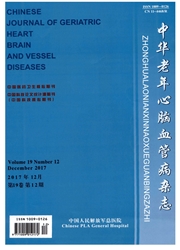

 中文摘要:
中文摘要:
目的探讨过氧化物酶体增殖物活化受体γ(PPARγ)激活剂吡格列酮对体外肥大心肌细胞炎性细胞因子表达水平的影响。方法体外培养新生Wistar大鼠心肌细胞,以血管紧张素Ⅱ刺激建立心肌细胞肥大模型,培养的心肌细胞分为3组,正常对照组,肥大模型组,吡格列酮组(5、10、201μmol/L)。用软件分析心肌细胞表面积,^3H-亮氨酸掺入检测心肌细胞蛋白合成速率,采用半定量逆转录聚合酶链反应法检测心肌细胞肥大特征性基因心钠肽(ANP),脑钠肽(BNP),炎性细胞因子白细胞介素-1β(IL-1β),白细胞介素-6(IL-6),基质金属蛋白酶2(MMP2)、MMP9以及PPARγ的mRNA表达。结果血管紧张素Ⅱ诱导后,心肌细胞表面积、ANP、BNP的mRNA表达以及蛋白合成速率增加;IL-1β,IL-6,MMP2,MMP9的mRNA表达也增加;PPARγ的mRNA表达下降。吡格列酮可以逆转心肌细胞肥大,下调ANP、BNP和炎性细胞因子及MMPs的mRNA表达,增加PPARγ的mRNA表达,并呈一定的剂量依赖性。结论吡格列酮能够抑制大鼠心肌细胞肥大,这一作用可能与其增加PPARγ的mRNA表达,下调炎性细胞因子的表达有关。
 英文摘要:
英文摘要:
Objective To investigate the effects of peroxisome proliferator- activated receptor γ(PPARγ) activator pioglitazone on the expression of inflammatory eytokines in hypertrophic eardio myoeytes in vitro. Methods Cardiac hypertrophy was established with angiotensinⅡ (Ang Ⅱ) stimulation. Cultured eardiomyoeytes were randomly divided into three groups: control group, Ang Ⅱ group and pioglitazone groups (5 μmol/L, 10 μmol/L, 20 μmol/L). The mRNA expression of ANP, BNP, IL-1β, IL-6, MMP2, MMP9 and PPARγ were examined by reverse transeription-polymerase chain reaction. The synthetic rate of protein in eardiomyoeytes was examined by 3H-leueine incorporation and the surface area of eardiomyoeyte was analyzed by NIH Image J software. Results Pretreatment of eardiomyoeytes with pioglitazone inhibited Ang Ⅱ -induced increase in surface area and ^3H-leueine incorporation, inhibited the mRNA expression of ANP, BNP, IL-1β, IL-6, MMP2 and MMP9 and increased the expression of PPARγ in hypertrophic eardiomyoeytes. All the above effects were related with the dosage of pioglitazone. Conclusions Pioglitazone can inhibit cardiac hypertrophy, which might be related with the effects on the mRNA expression of PPARγ and inflammatory eytokines.
 同期刊论文项目
同期刊论文项目
 同项目期刊论文
同项目期刊论文
 期刊信息
期刊信息
